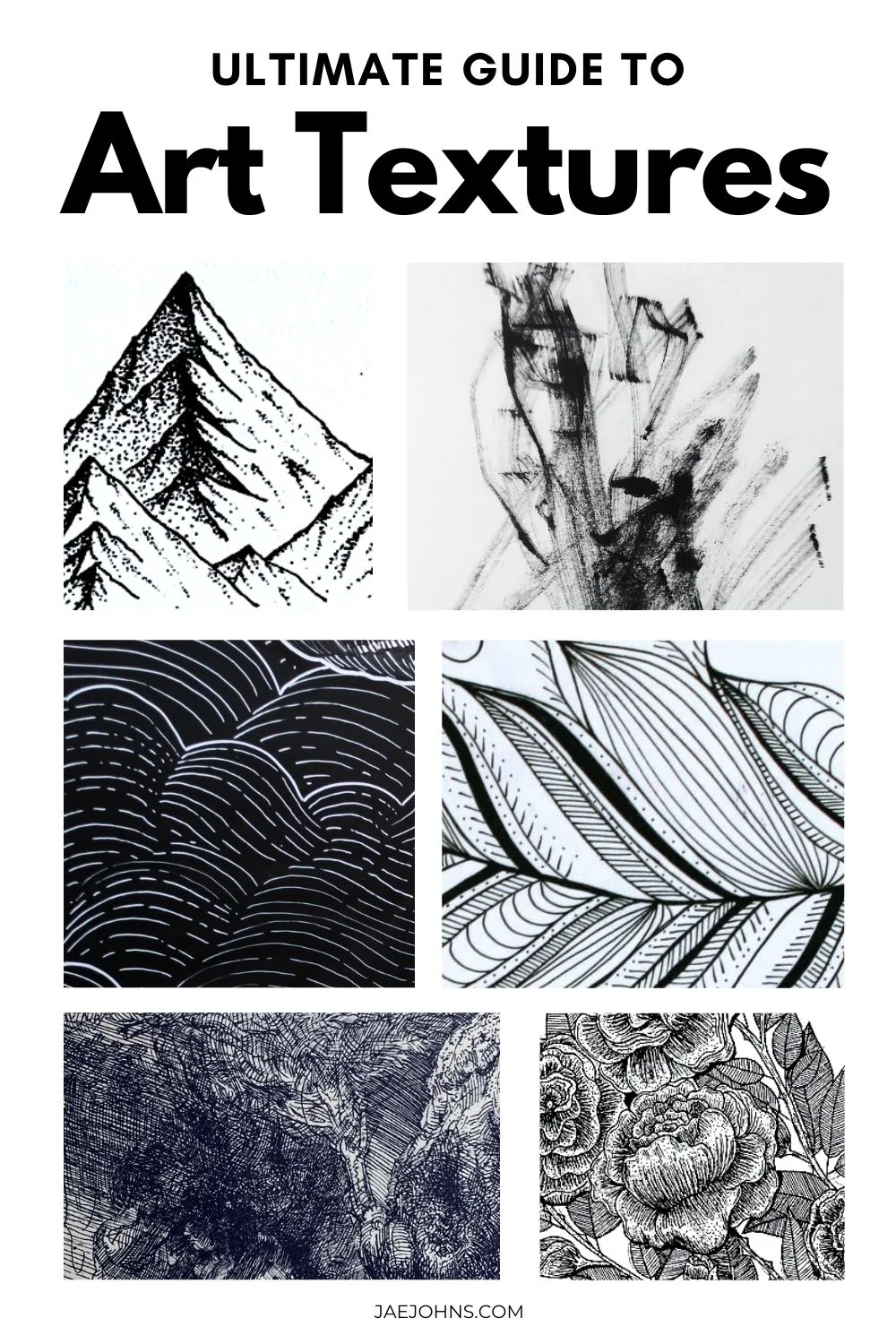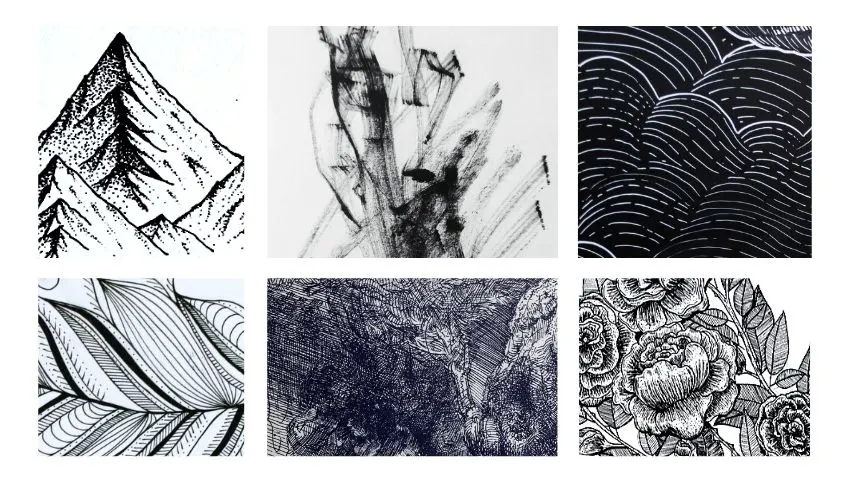You might have heard that art texture is an essential ingredient but is that even true?
Texture refers to an object’s surface quality, which is vital in visual communication.
Without textures, where’s the art, where’s the communication?
You can tell your story through the layer of texture you choose to use. It could be soft or hard, smooth or rough – all that one can feel through touch.
If you are a novice creative who wants to showcase your abilities by using different textures, then you’re at the right place.
Let’s get started.
What Is Texture in Art?
Texture in art is the quality of the surface and how it feels when you touch or see it
. Everything around us has some texture, such as wood, rock, and glass – all have different textures.
Similarly, to describe the art texture, I use glossy, slimy, smooth, rough, hard, soft, fluffy, hairy, and silky.
Sometimes the texture appears as hard or rough by looks, but when you touch it, it’s not.
Likewise, some pieces might feel smooth in appearance but become rough and gritty on touching.
In artwork, an artist uses the object’s texture to communicate with the audience emotionally or sometimes to create illusions through their painting or make people believe that their story is true.
To communicate the right feelings, you’ve to choose the right textures.
The textures are so essential in the art as they can tell the mood of the work and feel it either by touching it or by its appearance.
Here are a few reasons why you need texture in your artwork:
- Using texture visually balances your composition
- Texture creates visual interest in your work and draws public attention to it.
- Textures allow you to add contrast to a piece of art
- Using art texture offers more stylistic choices
- Last but not least: textures add depth to your design
Textures are, essentially, a part of a broader spectrum, known as ‘the elements of art.’
The textures you might use will only have a thorough effect when they’re used along with these elements.
Let’s have a look at them.
Elements of Art (Texture, Shape, & More)
The following are seven elements of art that make up a balanced visual composition:
Note: it’s not essential – and often not practical – to use all these elements in a single artwork.
Serving as one of the building blocks of art, textures give the desired effect one wants and tell the artist’s intent.
So when someone looks at your work, they can sense it visually and physically and thus connect with it.
You can use different art texture elements to create the desired pattern or effect on a surface.
Here’s an analogy that might make it easier for you to understand this idea:
Just like atoms combine to form a molecule like carbon (C) and Oxygen (O) to form carbon dioxide (CO2), elements in art texture combine to create powerful artworks.
A drawing that feels actual or real to the eyes when viewed or touched consists of different elements, materials, and techniques (aka atoms).
Elements of Art Examples
Below are some examples of elements of art that you can use to create unique patterns or effects in your work:
- To create a soft-to-touch texture, you can use feathers, hairs, cotton, wool, velvet, silk, and stuff that are downy, fluffy, fuzzy, or puffy.
- To highlight the negative and positive areas in your artwork, use space.
- To add value to your artwork, use lighter or darker color tones.
- Use lines to elevate your picture or to create a two-or-three-dimensional structure.
Different Types of Textures
As I saw before, textures can be divided into two main categories: physical and visual.
- Physical texture: any surface that you can feel by touching with your fingers.
- Visual texture: the texture used to create a physical illusion.
Under these categories, there are four types of art textures: invented, stimulated, abstract and actual.
Let’s have a look at some different techniques you can use to give these different art textures.
- Invented – You can create this pattern by repeatedly repeating the shapes’ lines to form a 2-D structure.
- Abrasive/Rough Textures – These textures irregularly reflect the light.
- Smooth Textures – Surface that is flat or uniform and reflects light evenly.
- Matte – Opposite to shiny surfaces, and is used to cast soft, dull lights.
- Impasto – In this texture, the artist paints on the surface in thick layers that give the impression of paint coming out of the canvas.
What is Tactile or Actual Texture?
Any surface that on touch feels real is tactile or actual texture.
For example, the material you use in architectural structures gives your piece a look similar to the actual texture.
You can feel and see the thick and thin layers of paint on the canvas.
What is Visual or Implied Texture?
Implied or visual texture is 2D art in which artists use different elements such as shading, coloring, and line to create an illusion.
Unlike actual texture, the visual texture always differs in touch and appearance.
For example, a painting might seem rough/abrasive in appearance but, when touched, feels smooth and flat.
You can create a 2D effect by repeating dots, lines, or shapes to form a pattern.
How Important is Texture in Design?
The texture is a critical factor in designing, where you can define it as the material you use to make things, the way you use it to convey your emotions to people, and how it makes others feel about your work.
If you want your work to look cool, you should use smooth, shiny structures to reflect more light, casting a cooling effect on the eyes.
Whereas, if you want to create a pleasant piece to touch or feel, then use a texture that absorbs more light, such as soft textures.
Final Thoughts
In closing, I would say the most valuable element in every artist’s artwork is texture.
Without art texture, it is impossible to engage the audience and connect them with another sense besides sight.


